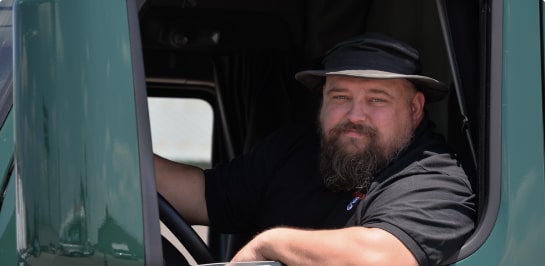The American trucking industry is running on empty. With a current truck driver shortage estimated at 80,000 – which analysts project could soar past 160,000 by 2031 – the entire supply chain is strained to its limit. As a Chicago-based carrier, HMD Trucking keeps a close eye on industry trends, especially concerning the future of truck driving jobs. For years, autonomous trucks – Class 8 semi-trucks – were seen as a far-off futuristic threat to truck driving jobs or perhaps a savior to the capacity problem.
Today, that future is here. Fully unmanned big rigs are already hauling revenue-generating cargo on public highways in the U.S. The rise of these automated 18-wheelers sparks both interest and concern. While we want to support sustainable trucking and maximize efficiency, we recognize that the potential loss of OTR trucking jobs is deeply concerning. That’s why we initiated a deep dive into self-driving truck technology, which we present here.
Consideration should also be given to changes in the overall economy. The question has shifted from “Does self-driving truck technology work?” to “Can a self-driving truck’s supercomputer ever replicate the real-world judgment that comes from years of driving experience?” A seasoned truck driver can detect trouble before it arises – or talk their way out of a tough situation.
The hub-to-hub strategy pioneered by the industry to define the future of freight transport suggests that the road ahead will be one of partnership: the machine for the long haul and the human for the complex middle.
Contents:
- Autonomous Tech Across Transportation Sectors: The Automation Scorecard
- The New Class 8: Who Built the Truck That Never Blinks?
- The Perfect Logbook: The AI's Advantage on the Open Road
- The AI's Achilles' Heel: Why the Supercomputer Can't Win
- The CDL's Next Gear: Complexity is King
- The Human Cost, The Union Fight, and the Drive for Survival
- Ready to Drive the Future?
Autonomous Tech Across Transportation Sectors: The Automation Scorecard
Before we start talking about autonomous trucks, let's delve into the basic terms of unmanned commercial transportation and current achievements and successes of this technology across various sectors. The success of logistics automation hinges entirely on one factor: predictability. The easier the operating environment, the faster the progress.
Below you'll find a quick overview of autonomy levels in various sectors of transportation, which are primarily measured using the Society of Automotive Engineers (SAE) J3016 standard for road vehicles and the Grade of Automation (GoA) standard for rail.
| Autonomy Level | Description | Key Feature & Role |
| L2 (Partial Automation) | The vehicle is capable of performing all driving tasks by itself in the defined ODD (Operational Design Domain), also in case the human operator does not acknowledge a system alert. | There is no need for a human driver to supervise the system or intervene; the vehicle operates safely even in case of a malfunction. This is the autonomy level that is needed for driverless trucking. |
| L3 (Conditional Automation) | The vehicle is able to perform all driving activities in given conditions; hence, the driver can disengage visual attention from the road and engage in non-driving tasks. | The Driver should be physically present and ready to assume control (“handoff”) within a few seconds if the system prompts for it. The transfer is a significant limitation. |
| L4 (High Automation) | The vehicle is capable of performing all driving tasks by itself in the defined ODD (Operational Design Domain), also in case the human operator does not acknowledge a system alert. | There is no need for a human driver to supervise the system or intervene; the vehicle operates safely even in case of a malfunction. This is the autonomy level that is needed for driverless trucking. |
| GoA2 (Semi-Automatic) | The train automatically controls acceleration and braking; a human driver is always present onboard to manage doors and emergencies. | Utilized by US freight rail in conjunction with Positive Train Control (PTC). |
| GoA4 (Unattended) | Rail-Specific: Complete automated control of the train, no personnel onboard. | Needs very controlled and insulated environments, like metro/subway systems all over the world (e.g., Paris, Sydney). |
There is a lot of variation in the degree of automation in the transportation sectors due to the specific challenges and regulations in each industry. Although road vehicles utilize the SAE levels, the rail and aviation industries have their own specific systems. Let's examine how these systems compare to actual operations, which demonstrates a clear trend toward increased robotics in more controlled environments.
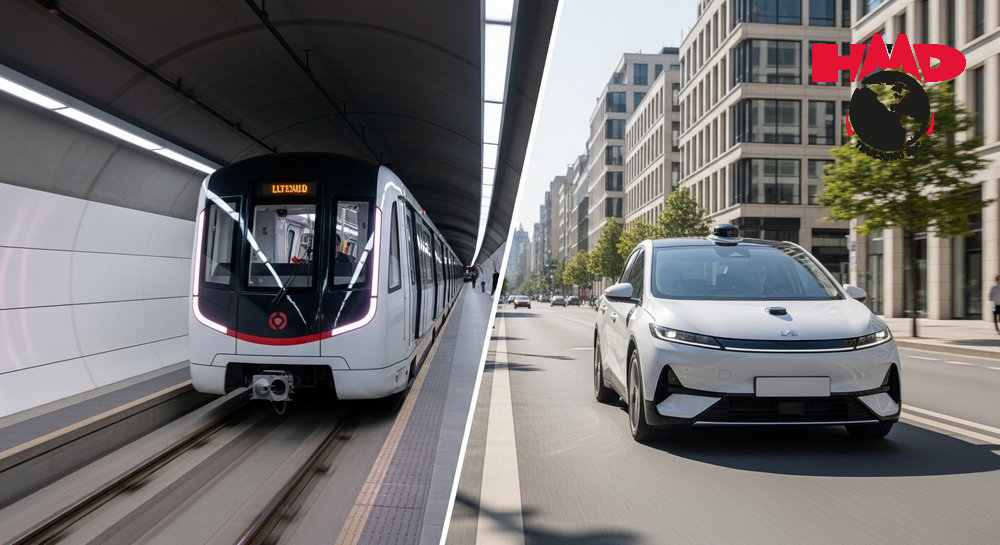
| Sector | Autonomy Status | Success Factors & Limitations |
| Robotaxis (US & Global) | L4 Commercially Operational & Scaling | Success (US): Geofenced cities. Waymo claims the number of injury-inducing crashes is down by 85% as opposed to human drivers. Clearly we see Waymo’s superior safety performance. Success (Global): Chinese firms (Pony.ai, WeRide) are rapidly rolling out L4 systems and are running robobuses and robotaxis in Singapore. Dubai and all over China. They are making a huge worldwide impact on the development of next-gen transport systems. |
| Public Buses/Shuttles | L2/L4 Operational on Fixed Routes | Success (Global): Various Chinese cities (Beijing, Shanghai, and Tianjin) and Singapore are testing autonomous bus service in public transport. Attitude towards AV buses is overall more positive than that of AV cars. |
| Personal Cars | Limited L3 | Limitation: L2 (constant supervision by humans is needed). True L3 is only accessible at low speeds on geofenced routes and only in luxury models. The “hand-off” issue, where the human must take over, is still a monumental one. |
| Trains (Transit) | GoA4 Fully Driverless | Success: Subways and metro systems around the world operate completely without drivers, as the track is a segregated, closed-loop, and highly predictable environment. |
| Trains (Freight) | GoA2 Semi-Automated | Limitation: The drawback is that crews of human personnel remain prevalent in the US use of freight, as well as in the utilization of Positive Train Control systems (PTC) as a safety measure. This national network is very variable and a difficult scale for full driverless operation/automation of mainline freight. |
| Airplanes | Advanced Autopilot | Limitation: The boundaries of autonomy can also be seen in large-size commercial passenger aircraft, where high assistance is employed, but human pilots are still required to supervise, decide and execute takeoffs and landings. Presently, full autonomy can only be realized on small drones. |
Takeaway: Autonomy thrives when the environment is simple and predictable. When things get complicated – like in a busy city, or when a system malfunctions and needs a human to regain control – the limitations of the supercomputer are exposed. That's why trucking is starting on the open highway.
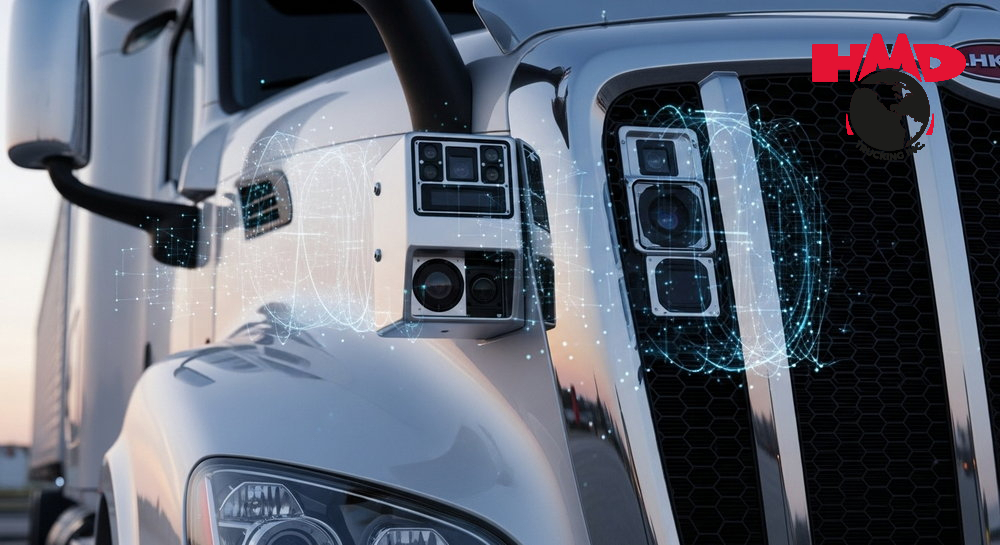
The New Class 8: Who Built the Truck That Never Blinks?
In the case of long-haul trucking, developers completely skip L3. And why? This is because in L3 you are still expected to be on standby and ready to grab the wheel, and your truck will still be bound by your HoS clock. Level 4 (L4) autonomy is the only solution capable of solving the trucking industry’s profitability puzzle, as it completely eliminates the limiting factor – the human – from a specified Operational Design Domain (ODD).
This is where we currently stand in the struggle over L4 OTR semi-trucks against a backdrop of massive innovation in AI in transportation:
- Aurora Innovation
Aurora is the frontrunner in real-world deployment of self-driving freight, having logged commercially driverless rides in Q2 of 2025. Despite hitting that threshold, the company still has a 201 million loss related to R&D. As CEO Chris Urmson put it, “We’re no longer selling a vision; we are selling a real product, and that’s going to change our customers’ businesses.” Aurora scales quickly, going from one to three driverless in Q2 2025 on the Dallas to Houston route. Aurora plans to begin large-scale production of self-driving trucks featuring the Aurora Driver in 2027.
-
- The OEM Safety Question: Even after Aurora received L4 certification, PACCAR, the truck maker, required that a human “observer” be present in the cab because the base vehicle was using prototype parts. While Aurora stated that the Aurora Driver assumed all driving responsibilities, PACCAR CEO Preston Freight argued that “Having a ‘driver in’ seems like the smartest idea,” which shows some discrepancy between the tech developer and the OEM about responsibility for highway safety protocols.
- Daimler Truck / Torc Robotics
This team is the powerhouse OEM alliance. The "autonomous-ready Cascadia" chassis works as the basis for these trucks. Advanced redundant safety systems will be integrated. The expected release of these factory-grade L4 autonomous trucks will be geared towards the 2027 market. The emphasis is on computer vision for vehicles, coupled with advanced neural networks for improved decision-making.
- Kodiak Robotics
A top vendor recognized for launching commercial driverless operations on private lease roads in West Texas, proving a viable early-stage "driver-as-a-service" business model.
The Perfect Logbook: The AI's Advantage on the Open Road
L4-Automated vehicle does not drive better than any good human. It drives perfectly in the sense that it is programmed to do so. That perfection translates into the tremendous economic impact of automation.
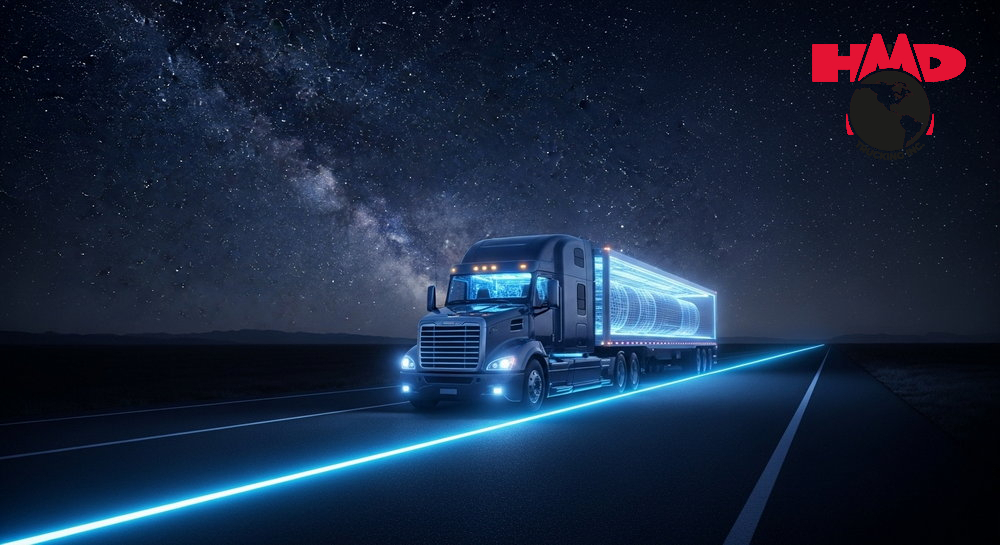
Solves the Shortage, Drives Down Cost
The trucks can drive almost 24 hours a day because there is no human behind the wheel. This proves to be useful for reducing the existing capacity shortage and optimizing the existing resources.
Take Aurora. Its first nighttime operations began during the second quarter of 2025. This enabled them to offer freight delivery in 24 hours and was an early indication of the scalability of their fleet management systems.
Wages for drivers are the single largest operational cost in the freight transport industry. Autonomous trucks will replace drivers in the long-haul sector and are expected to reduce long-haul freight costs by 30%. This will save the U.S. freight industry $168 billion in annual costs. The AI in these trucks also optimizes fuel while driving. Some companies have diesel trucks or alternative fuel-powered trucks and say they save 11% on fuel in open routes. This fuel economy comes from efficient route planning on the truck and analysis of real-time data.
The Unblinking Safety Factor
In the case of driving, the argument supporting this idea that AI is an ‘improved driver’ is precisely ‘attention.’ Human error accounts for 85% to 94% of all truck accidents. Supercomputers will not take a break, get distracted, become drowsy, or make bad decisions under stress. The safety on the highways is incalculable.
AI ‘watchfulness’ is particularly desirable at night. With proprietary long-range LiDAR on board, the autonomous vehicles can sense objects at a distance of 450 meters and can identify and recognize people or debris on the road 11 seconds earlier than a conventional night driver in the dark.
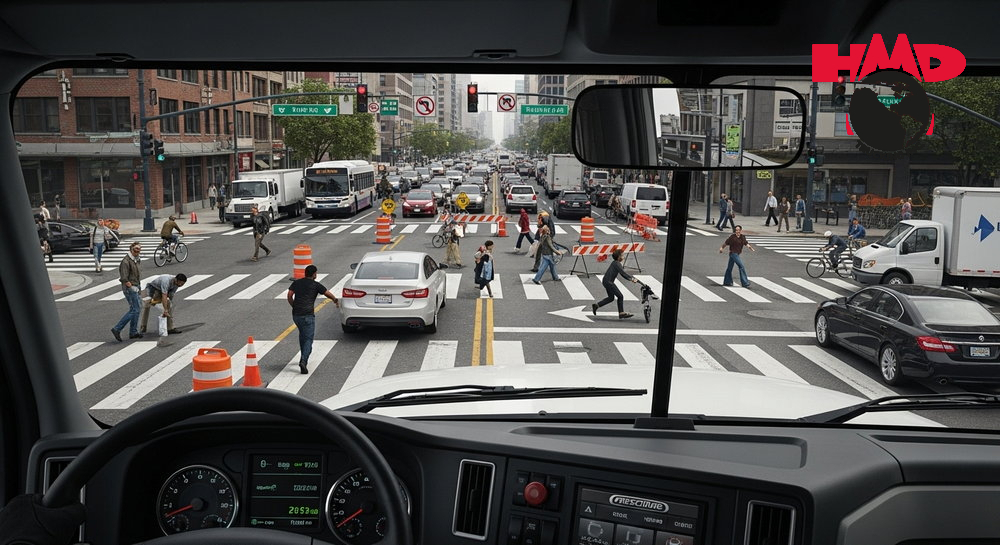
The AI's Achilles' Heel: Why the Supercomputer Can't Win
The road to mass adoption remains paved with human problems that require political will, legal consensus, and public acceptance despite the technical wins. Here is where things get complicated.
1. The Patchwork Crisis
A freight corridor can cross several states. Autonomous systems rely on precision and predictability. But the U.S. has a “patchwork” of state regulations: Thirty-five states allow some kind of testing, but the others impose conflicting, restrictive dictates. This legal inconsistency makes cross-country autonomous freight strategically impossible at scale. This patchwork stalls progress, as AVs need consistent safety regulations. The America Drives Act, for example, attempts to compel the FMCSA to establish coherent national standards by 2027, but in the meantime the fragmentation adds chaos to DOT rules.
2. The Liability Nightmare
In a traditional wreck someone is negligently driving. But when the driverless truck that never blinks crashes, who is to blame? The liability moves from the human driver and fleet to the OEM or the software developer (product liability). This means completely redoing commercial transport insurance. New offerings should include policies that address technical risks, such as system failures, as well as cyber liability insurance. Regulators in California and elsewhere are imposing very large insurance bonds (i.e., $5 million) on AV operators that reflect this enormous new financial risk introduced with software accountability.
3. The Public Trust Gap
The public remains deeply skeptical. A staggering 62% of Americans believe autonomous trucks will make highways more dangerous. This fear is highest among older generations, with 80% of Baby Boomers specifically voicing concern. This lack of trust generates political pressure that can slow progress more effectively than any technical issue.
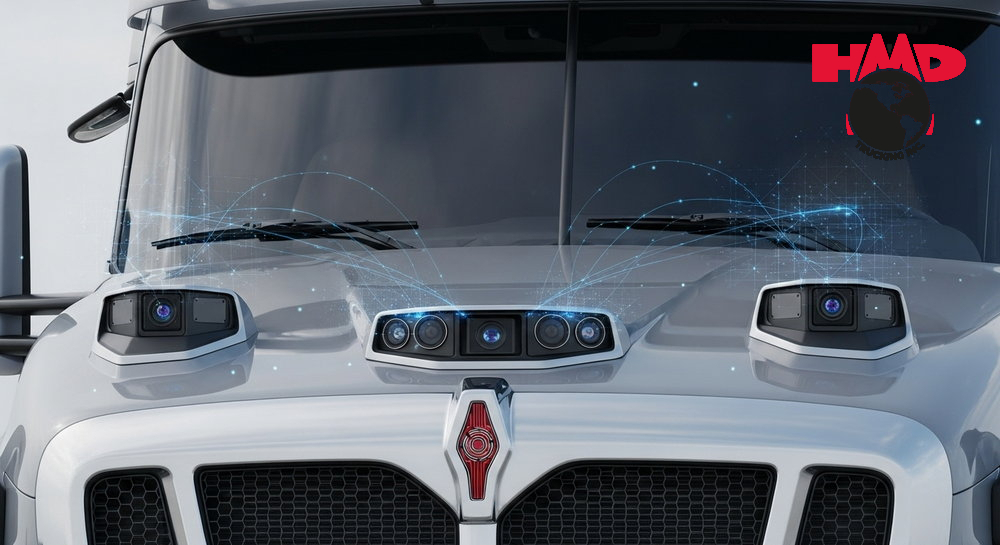
The CDL's Next Gear: Complexity is King
So, is the truck driving job going the way of the dodo?
For drivers whose primary value lies in logging repetitive, low-complexity highway miles, this kind of displacement is a very real threat – particularly for those in long-haul LTL and parcel work, where the runs are lengthy and the pay is high. One estimate suggests that automation could put as many as 300,000 truck drivers out of work each year.
The value of the CDL holder in this new logistics paradigm, however, is reinforced by both the limitations of the technology and the deployment model chosen by the industry. The supercomputer may master the perfection of the highway, but only the human can manage its complexity.
The Indispensable Human Roles
The hub-to-hub model envisions that professional drivers will continue to handle the most demanding parts of each trip:
- First and Last Mile: AI isn’t ready for city streets. Urban traffic, unpredictable road users, and the complexities of the final delivery – like backing into tight docks and handling paperwork – are all still the domain of human drivers. No autopilot or route-planning algorithm can match a driver’s situational awareness, experience, or instinct.
- Logistics and Maintenance: Even autonomous trucks still need human hands. Drivers and technicians are required to inspect rigs, refuel, troubleshoot technical issues, and interface with fleet management systems.
Transformation, Not Annihilation
The profession is transforming – from long-distance operator to local logistics expert and technical specialist. This shift is creating new, higher-value roles that often build on a CDL background, such as remote operations specialists and AV maintenance technicians, who focus on autonomous vehicle sensors and software.
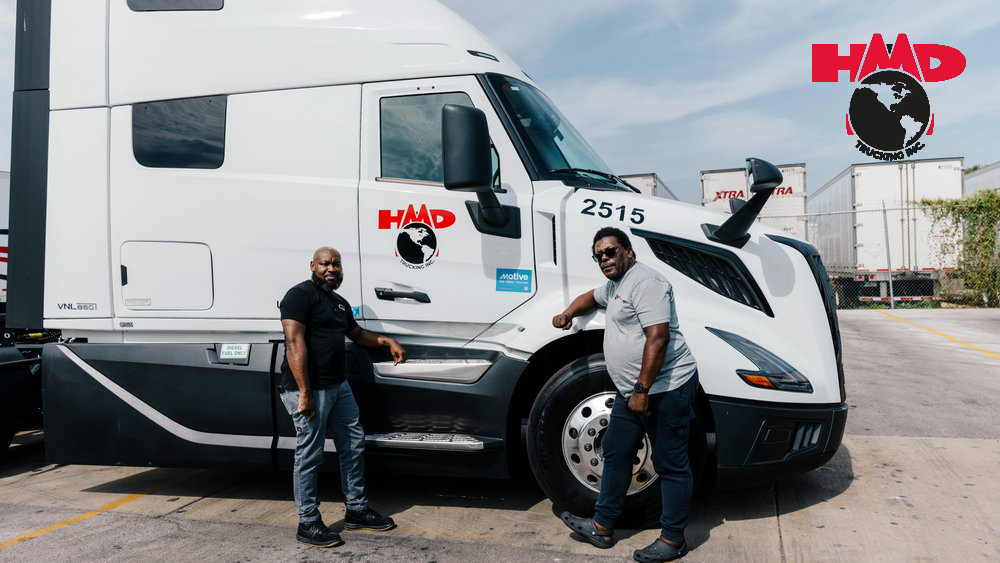
The Human Cost, The Union Fight, and the Drive for Survival
While the advancements of spreadsheets look promising, they are missing the point of the tens of thousands of families that depend heavily on those long-haul paychecks. The American truck driver is on average 54 years old, and the prospect of being informed that the high-wage, high-skill profession is being stripped down to a low-wage ‘truck marshal’ position created truly heart-wrenching scenarios. Cash-burning companies like Aurora that are set to lose over $175 million quarterly have to be guessing the economic break-even point on the most expensive variable – the people.
This is a continuation of class warfare on humanity under the guise of technological advancements.
The Union Fight
The 1.3 million member-strong International Brotherhood of Teamsters is not just advocating for the reduction of “job-killing automation.” With requests like CA’s AB 33, which commands the presence of a human safety operator in every autonomous vehicle, they are gearing up for battles and possible strikes for corporations like Albertsons. Those plans, combined with other under-the-table moves, are aimed at pushing ‘unsafe’ contract terms that would enable autonomous trucking and shift the automation of responsibilities to the companies.
The Impossible Job
What becomes of the so-called “Human Safety Operator”? Unfortunately, the picture isn’t pretty. Operators are confined to a cab, continuously monitoring an “intelligent” system, often falling into the out-of-the-loop problem – where human reaction time becomes nearly irrelevant. They remain bound by Hours of Service (HoS) regulations, undermining the 24/7 operational advantage that automation was supposed to provide.
In essence, the driver becomes a machine minder – reduced to surveillance duties – while industry voices suggest these “truck marshal” roles should pay at the lower end of the wage spectrum, or only marginally above, disregarding the skill and responsibility once tied to actual driving.
The Liability Trap
The presence of a human operator in an automated semi-truck would also, theoretically, support carriers to reduce insurance rates and liability worries. But this “safety” option has a legal trap; when an accident occurs stemming from a systemic failure, then it becomes a product liability problem, and the tech provider is liable. But, if the system raises an alarm and the tech operator, weary after hours of monitoring, fails to respond in time, the responsibility is assigned to human error. Whose fault is it when an 18-wheeler truck, automated and unmanned, is in an accident and there’s no one there to pin the blame onto? The answer is uncertain and questionable, and the human operator could in fact be held liable for the failure of the machine, even if they were only being paid to monitor the truck, not actually operate it. For the professional long-haul truck driver, the truth is bleak; you are not merely a line item. You’re the custodian of $600 billion dollars in freight and the custodian of the highway.
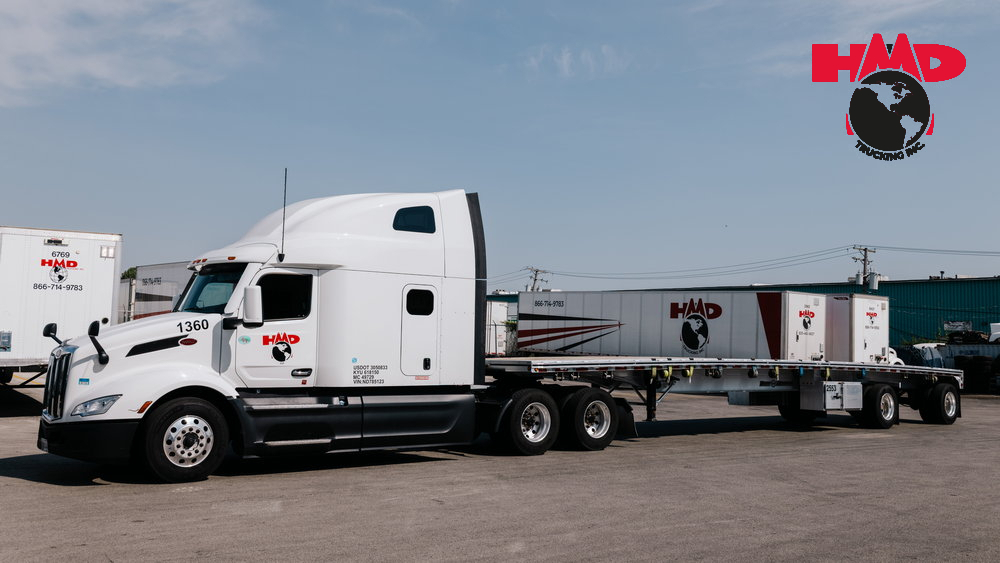
Ready to Drive the Future?
While the debate over when Level 4 (L4) autonomous trucks will truly dominate continues – especially since America’s vast network of roads and infrastructure was designed for human drivers – the reality today is simple: freight still relies on professional truck drivers for the majority of the work. Regulatory and public acceptance hurdles make it difficult to predict exactly when unmanned big rigs will fully enter the mainstream, delaying widespread adoption.
At HMD Trucking, we know where the real value lies right now – with the skilled men and women in the driver’s seat. We’ve always embraced innovation, exploring new power sources – and yes, we’ve even ordered Teslas and had Nikolas in our fleet – but we also know that a driver’s skill remains the irreplaceable heart of our operation. We are a family, and you can count on a truly human attitude – not just a software update.
We believe your expertise is essential. Because we understand this shifting landscape, we’re already developing training programs to help our drivers transition into specialized roles within the trucking and broader freight-moving industry – ensuring career stability within the HMD family.
If you are a professional CDL holder ready to capitalize on your irreplaceable skills, we offer:
- Top Pay and Miles: Top of the line CPMs and enough miles to guarantee a great weekly paycheck.
- Reliability: Well-maintained trucks and trailers.
- Life Balance: Desired home time and comprehensive benefits.
If you're ready to partner with a company that strongly relies on your human judgment, skill, and hard work today, contact HMD Trucking.


